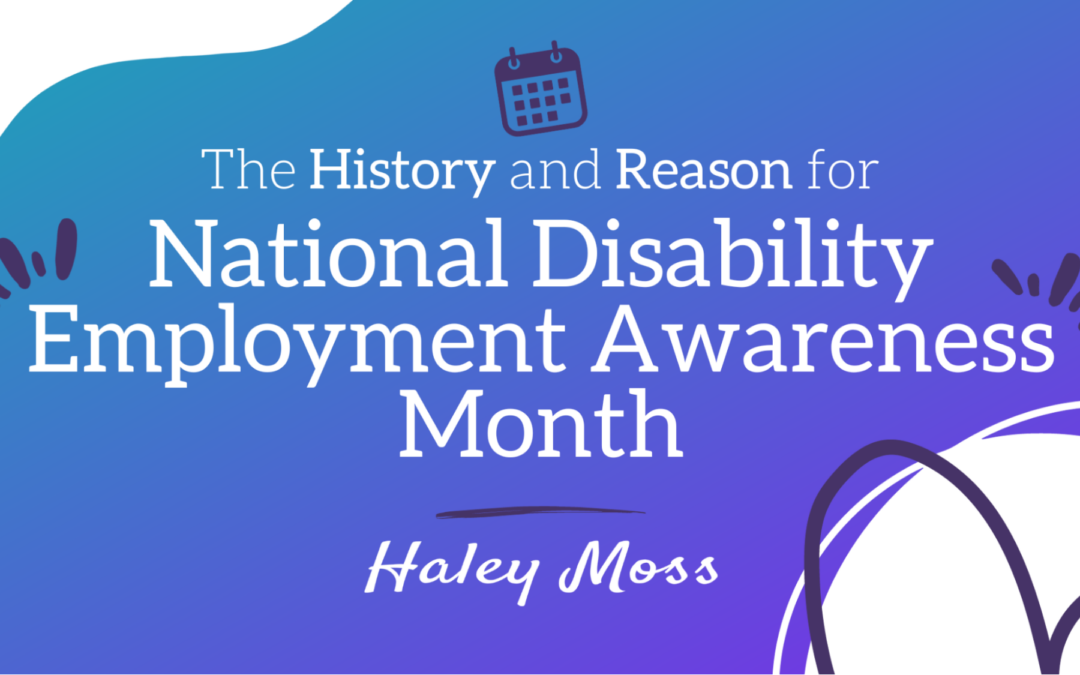Each October, this country celebrates National Disability Employment Awareness Month, where we acknowledge the amazing contributions and achievements of employees with disabilities while also looking to improve the future. This month is no different, and I am thrilled to be able to celebrate this month with the rest of this fantastic community!
Each year, The U.S. Department of Labor focuses on a different theme or motivation for National Disability Employment Awareness Month. For 2023, the DOL has chosen “Advancing Access and Equity” as the theme for 2023. I think this is a fitting theme as we continue to see a changing workforce and what that means for people with disabilities. But, to truly celebrate, let’s discuss the history and the effect this month has on our community.
The History of National Disability Employment Awareness Month
National Disability Employment Awareness Month originated back in 1945 when Congress passed a law establishing the first week of October as “National Employ the Physically Handicapped Week.” Similar to what it is now, this week was brought to fruition to help support workers with physical disabilities, find employment, and grow the job pool for them.
Then, in 1962, under the presidency of John F. Kennedy and the President’s Committee on Employment of the Handicapped, there was a name change to take the word “physically” out to bring support to those both physically and mentally disabled. This effectively changed the name to “National Employ the Handicapped Week.”
This stayed until 1988 when, under former President Ronald Reagan, Congress expanded the event from a week to a month and changed the name to what we know as National Disability Employment Awareness Month. In 2002, Former President Bill Clinton also changed the Presidential Committee’s name to the President’s Disability Employment Partnership Board.
The Reason For National Disability Employment Awareness Month
This month is to bring awareness to the amazing progress that has been made for those with disabilities in the workforce but also to bring attention to all the work that still needs to be done. While so much has changed since this event’s founding in the 40s, that does not mean there is no more change to be made.
This year alone, the employment-population ratio for disabled people reached 23%, the highest it has been in the last few years. While this can be explained because of the pandemic opening doors for flexible working opportunities such as hybrid or remote situations, there is still an unacceptable unemployment gap.
Additionally, there continues to be a 17% wage gap for people with disabilities. In the same tone, Section 14c of the Fair Labor Standards Act (FLSA) states that employers, after receiving a certificate from the Wage and Hour Division, can provide those with disabilities a subminimal wage, meaning less than minimum wage.
This month is to bring awareness to the successes and the challenges that we still have to face. Employees and employers everywhere can take advantage of this opportunity, educating themselves on how to make a difference and how to make their workplace more accessible and equitable for everyone.
How Can You Celebrate and Support Throughout This Month?
No matter who you are, there is a way to contribute to those around you!
If you are an employee or employer…
- You can review company policies to ensure they convey an inclusive workplace.
- You can train supervisors to ensure they understand how to foster an accessible and equitable workplace for everyone.
- You can also educate employees in a similar fashion, create a resource group for people to connect with others of similar backgrounds, and hang up the NDEAM poster.
It is ideal if these trainings are led by people with disabilities, which is why this is a main aspect of my support and advocacy in our community! If your workplace is looking to have training done, reach out to me, and I would be happy to help!
If you are an educator…
- You can create a display on a bulletin board or wall, including the NDEAM poster and other resources to advocate for the disability community while also educating those outside of it.
- You can educate about disability history, terms, and general knowledge to ensure teachers and students are all well-versed.
- You can train front-line staff appropriately to ensure they have the knowledge, skills, and abilities to serve neurodivergent and disabled individuals properly.
If you are in local, state, or national governments…
- You can establish a Legislative Disability Awareness Day to raise awareness on bills that could improve employment for those with disabilities.
- You can create a NDEAM statement to release to affirm your state’s commitment to creating an inclusive workplace for everyone.
- You can educate staff members to ensure they understand disability inclusion effectively and regularly demonstrate that commitment in their actions.
There is so much that can be done during the month of October and beyond to ensure that those with disabilities have an inclusive and equitable work life and have the same opportunities as everyone else. If you have further questions or want to discuss this topic more, contact me!

